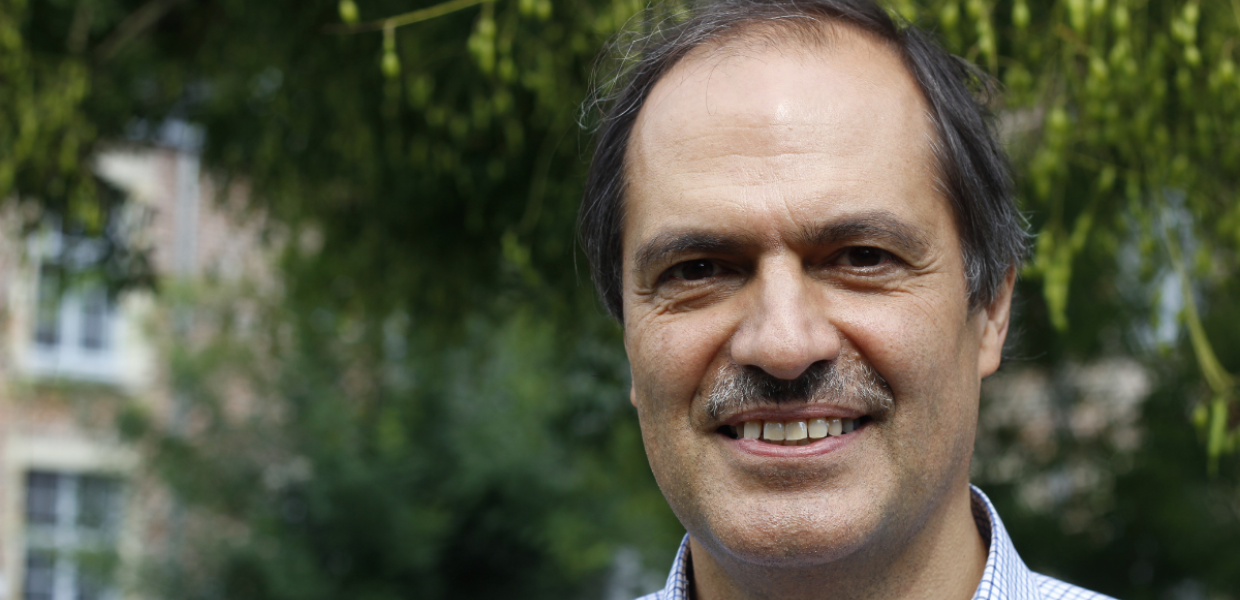How did you enter your profession?
That is a long story! I did a PhD in Philosophy, on the notion of predicate in Logic, and worked as a teaching assistant at the Faculty of Arts KU Leuven when it still included the Philosophy Department. In the late eighties and early nineties my interest for (personal) computing and subsequently the internet grew stronger, and I landed a job as ICT coordinator for the Faculty of Arts. I effectively coordinated large university projects on web information systems, e-learning and library systems. Eventually I was appointed as Professor of Data Processing for the Arts, and later for Online Publishing at the Department of Cultural Studies. I helped to found the Photolab of the Faculty, which would become the Imaging Lab of the university.
After running some local projects on image databases, my first contact with Europeana was as coordinator of the Europeana Photography project, in which we delivered about 450,000 images from the first 100 years of photography. From this project, Photoconsortium - the accredited aggregator for photography - emerged, of which I am the current president.
What are you currently working on?
Currently I’m mostly working on projects relating to digital transformation in the cultural heritage sector. This is in line with my original ICT career, in which I worked on building bridges between the needs of humanities education and research and information technologies. I’m interested in how we can capture more aspects of cultural processes in data streams, for example, the event or usage history of art objects and representations. This is also related to understanding how ICT solutions can support true interaction and user engagement with heritage collections.
What are some of the challenges in your role? What are some of your favourite elements?
I like to interface between disciplines, and have always worked - after my PhD - in interdisciplinary research. It is what sociologists Harry Collins & Robert Evans call ‘interactional expertise’ in their Rethinking Expertise (University of Chicago Press, 2008). Often, you need to learn the ‘language’ of other professionals to be able to collaborate, even if you are not supposed to be able to do their work. I see this as a main challenge in the heritage profession, as it touches upon so many dimensions of life. This leads me to an interest in the development of multi-perspective metadata.
What was your motivation for joining the Members Council?
I joined the Europeana Network Association (ENA) to help grow the Europeana Initiative, as I strongly believe the European Union needs large digital platforms of its own. I like the democratic nature of the Network, and see the Members Council as a sort of parliament representing the thousands of members. This gives real 'clout' to the Europeana Initiative and is, in my opinion, one of its main assets. I strongly encourage other members to come forward and stand for election to the Members Council!
What do you plan to do as a Members Councillor?
While my tenure is reaching an end, I was happy to contribute, in the last two Management Boards, to the development of the ENA communities, making sure there is some funding available for the much needed voluntary work contributed by ENA members. My heart goes out to Education, as it holds the key to any sustainability effort. My dream is that every schoolchild in Europe has the chance to discover Europeana at least once in their curriculum!
You are on the Europeana Education Community Steering Group; as we focus on educational activities this month on Europeana Pro, can you tell us what the community has been up to recently?
There is so much to tell! We were delighted to launch Built with Bits, through which educators can learn how to contribute to the New European Bauhaus movement by taking part in a mentoring programme and educational challenge to design beautiful and sustainable spaces with Mozilla Hubs. There is an introductory workshop open to anyone on 30 September for those who want to know more about the project with a great panel of European commision representatives and experts on immersive technologies for education.
The Audiovisual Task Force which ran last school year, led by EUScreen, will also soon publish a White Paper on Audiovisual Material, and we hope to kick off a Task Force on newspapers in education in collaboration with EuropeanaTech Community members in the coming months!



